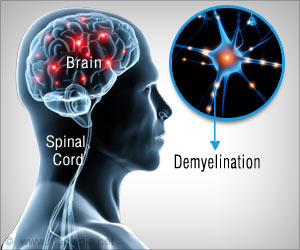A commonly used device found in living rooms could be a cheap and effective means of evaluating the walking difficulties of multiple sclerosis (MS) patients.

‘Using a video game camera that detects movement and computer algorithms that quantify the patients' walking patterns can reduce potential for human error.’





A team of researchers led by McGill University postdoctoral fellow Farnood Gholami, supervised by Jozsef Kövecses from the Department of Mechanical Engineering and Centre for Intelligent Machines, collaborated with Daria Trojan, a physiatrist in the Department of Neurology and Neurosurgery working at the Montreal Neurological Institute and Hospital, to test whether the Kinect could detect the differences in gait of MS patients compared to healthy individuals. In current clinical practice, the walking movement of MS patients is usually assessed by their doctors, and subjective evaluations may distort results: two different clinicians may give the same patient different evaluations. Using a camera that detects movement and computer algorithms that quantify the patients' walking patterns can reduce potential for human error.
Gholami captured the movement of 10 MS patients and 10 members of an age-and-sex-matched control group using the Kinect device. The MS patients had previously been assessed for gait abnormalities using the traditional clinician method.
Using the data, the team then developed computer algorithms that quantified gait characteristics of MS patients and healthy people. The investigators found that gait characteristics measured with the Kinect camera and analyzed with the developed algorithms were reproducible when assessed at one visit and were different between MS patients and the healthy individuals. Moreover, the gait characteristics of MS patients obtained by the algorithm were correlated with clinical measures of gait. In addition, the algorithms could mathematically define the characteristics of gait in MS patients at different severity levels, accurately determining his/her level of gait abnormality.
Gholami says he became interested in using motion capture technology for clinical purposes as a PhD student, but the equipment he was using at the time was very expensive, difficult to use, and non-portable, making widespread clinical use prohibitive. The Kinect device gave him an inexpensive tool to use that appears to be still accurate enough to do the job.
Advertisement
Trojan says the tool could be useful "to assess treatment effects of certain interventions such as rehabilitation or medication, and to document MS disease progression as reflected by gait deterioration. It may also be useful as a measure in clinical trials."
The full research paper was published in the IEEE Journal of Biomedical and Health Informatics on July 21, 2016. This research was made possible with funds from the Natural Sciences and Engineering Research Council of Canada.
Source-Eurekalert














